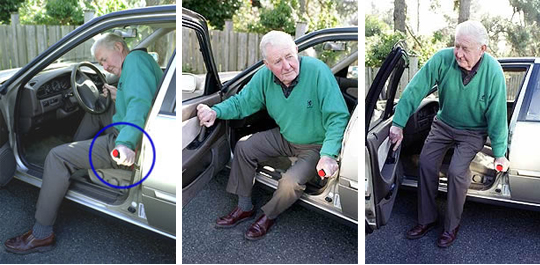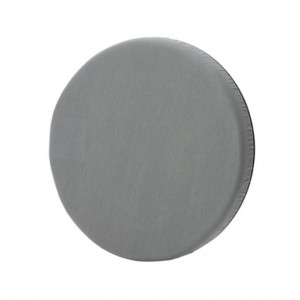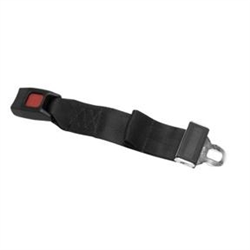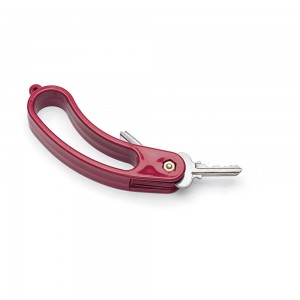By Aimee Sterk, LMSW, MATP Staff, from Michigan Assistive Technology Program
My relationship with my husband had it roots in cars. Stickshifts and Safetybelts was our dating theme song. We spent a lot of time in our cars–he lived 45 minutes away–and we liked to go on drives together. We very much appreciated his bench-seated (though also stick-shifted) Ford Ranger.
Then, in the last two weeks, we’ve both decided to buy new vehicles. With almost a half a million combined miles, our cars were ready for retirement.
As I sat through the not-always-enjoyable process of negotiating a price on the vehicle I want (and finally at a dealer I liked), I thought about assistive technology (AT) I use in my car and other AT devices for cars.
Michele Seybert of United Cerebral Palsy Michigan, did a great, extensive, webinar for us on vehicle modifications, but I’m thinking more of easy-to-install modifications for people that need AT to help them drive and get in and out of the car. Michele briefly covered some of these items in her webinar as well.
The Handybar is a sturdy handle with a downward pointing beak that extends about 4 inches. It fits snuggly into the U shaped metal piece in the car door frame that the lock engages with. When the door is opened, the device wedges into this closed U shape metal piece, providing a stable, strong handle from which to push yourself to a standing position.a man getting out of the car using the handybar.
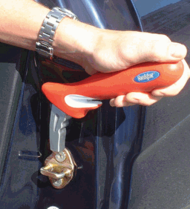 I frequently demonstrate the swivel seat which is a round cushion on a lazy susan bearing that helps people swing their feet in and out of the car (sometimes a plastic grocery bag can do the trick for this too).
I frequently demonstrate the swivel seat which is a round cushion on a lazy susan bearing that helps people swing their feet in and out of the car (sometimes a plastic grocery bag can do the trick for this too).
At a recent presentation, a woman said she keeps long kitchen tongs in her car so she can reach things on the other side of the car or things she has dropped.
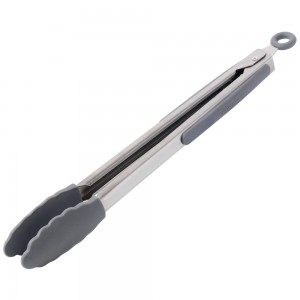 I use a Bucky in my car to help support my lower back which helps my chronic upper back pain. It is a buckwheat filled lumbar pillow.
I use a Bucky in my car to help support my lower back which helps my chronic upper back pain. It is a buckwheat filled lumbar pillow.
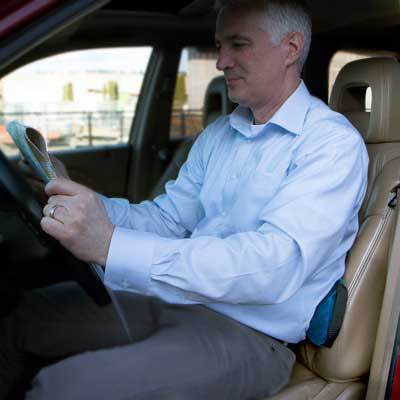 One of our demonstrations sites, Disability Network West Michigan, in Muskegon, recently worked with a person that needed an extended seat belt so she could fit her seatbelt around her body safely and comfortably. Karen, the AT person at Disability Network, was told that extended seatbelts are illegal. They did some checking with the local police and this is not the case. She also learned that you don’t have to purchase the extenders made by the car manufacturer. There are other options online that are much more affordable.
One of our demonstrations sites, Disability Network West Michigan, in Muskegon, recently worked with a person that needed an extended seat belt so she could fit her seatbelt around her body safely and comfortably. Karen, the AT person at Disability Network, was told that extended seatbelts are illegal. They did some checking with the local police and this is not the case. She also learned that you don’t have to purchase the extenders made by the car manufacturer. There are other options online that are much more affordable.
Several years ago, my friend Carolyn shared with me that some vehicle manufacturers were selling people expensive key turning aids. People with hand-strength disabilities, especially arthritis, have a hard time with the pinching and turning motion required to turn on some cars (some cars now turn on with a button). There are far more affordable alternatives to the vehicle manufacturer devices called key turners. They give a bigger handle to grip and provide leverage.a key turner with two keys in it. One is folded back toward the grip for storage, the other is extended for use.
My new car, a Toyota RAV4, will have Bluetooth capacity to allow me to use my phone hands-free. This will help my upper back pain as well as provide better safety while driving. The RAV4 is also easier to get into and out of than my old car, a Honda Civic–I’m really looking forward to my new ride!
What devices help you to drive or ride in a car? What works well for you? What has not worked?
Write your ideas in the comment section below – also, if you want to try out the Handy Bar or other assistive technology devices and you live in CA, check out the AT EXCHANGE.


